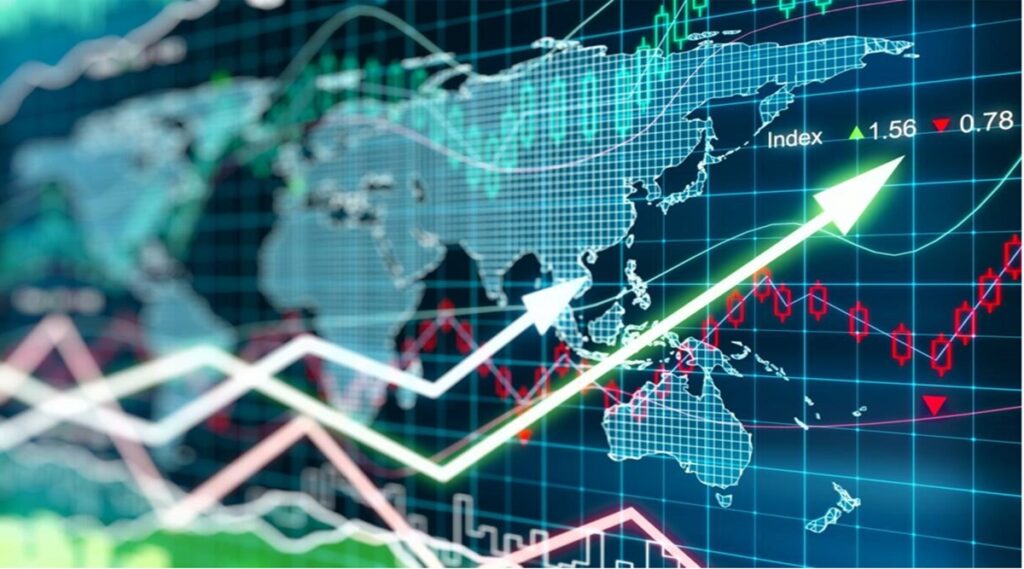
Explained: Fed Reserve rate hike, US recession and impact on India
By Wayne Cole
Sydney (Reuters) – Asian shares made profits guarded on Thursday because investors direct the possibility of a slowdown in the rate of rising US interest rates, entertaining the bond market and sending dollars to the lowest three weeks in Yen.
Federal Reserve As surprised no one by lifting the 75 basis point (BPS) to 2.25-2.5% on Wednesday, but indeed changed his statement to quote some of the sauce in the latest data.
The Chairman of Fed, Jerome Powell, was heard Hawkish who was suitable for curbing inflation in his press conference, but also dropped a guide about the size of the next interest rate increase and noted that “at a certain point” would be appropriate to slow down. [
“The Fed no longer feels behind the curve and can now assess the suitability of ‘meetings with a meeting’,” said Elliot Clarke, a senior economist at Westpac.
“This is not to say that the cycle to increase the complete rate or even pauses will come, but the risk seems as if they switch from leaning to the side upside down to the negative side.”
The Futures Market still has 100 BPS further tightening at the end of the year, but also implies around 50 BPS for slaughtering interest rates of more than 2023.
Only the instructions from Fed are less aggressive are enough to send the index of the Asia-Pacific shares of MSCI outside Japan rose 0.7%.
Nikkei Japan added 0.3% and South Korea 0.7%. Chinese blue chip strengthened 0.6%, assisted by Beijing’s report planning more support for the hard property sector.
Eurostoxx 50 Futures also rose 0.6% and FTSE Futures 0.2%.
However, shares from several U.S. Main Technology companies, including the Meta platform, glided after hours as a result of a bad quarterly and outlooks underlined the concern of the recession.
It saw Nasdaq Futures down 0.4%, after enjoying their biggest daily profits since April 2020 on Wednesday, while the S&P 500 futures subsided 0.2%.
Attention is now turning to data on the US Gross Domestic Product for the second quarter where other negative reading will meet the technical definition of recession, even though the United States has its own method to decide.
Median estimates are for 0.5%growth, but the estimated Fed Atlanta that is closely watched about GDP is for a decline of 1.2%.
Euro still lacks energy
In the bond market, the results of the Treasury two years are 3.00% after falling 6 bps after the FED meeting. [OUR/]
Although the yield curve increases slightly, most of them remain reversed in the sign of investors believe that tightening policy will cause lower economic declines and inflation.
“While the central bank is still on the track to continue tighten this year, the more likely the rate of interest rate increases that is the fastest might be behind us,” Analysts said at JPMorgan (Nyse: JPM) in a note.
“The decline in commodity prices, especially not including European natural gas, must offer some inflation assistance, and the global economy outside China loses momentum.”
In the currency, the dollar index relieved a small portion to 106,320 after losing 0.7% overnight due to increased risk sentiment.
It also experienced a rare setback in the Japanese yen, falling 0.7% to 135.54 because some investors decided to order profits in a number of long positions. [FRX/]
Euro floated around $ 1,0204, after bounced 0.9% last night, but faced rigid resistance at $ 1,0278.
The single currency still has an energy crisis to compete with the IMF warn that Russian gas cut-offs to Europe can cause economic growth for almost zero next year.
Russia has sent less gas to Europe this week and warned further cuts to come, increase the price of gas and oil globally. The decline in crude and rebound inventory in gasoline demand in the United States also supports prices. [OR]
US crude oil rose 92 cents to $ 98.18 per barrel, after bouncing 2.4% last night, while Brent received 75 cents to $ 107.37.
Gold Spot 0.2% faster at $ 1,737 per ounce, after benefiting the decline of dollars and bond results. [Goal/]




